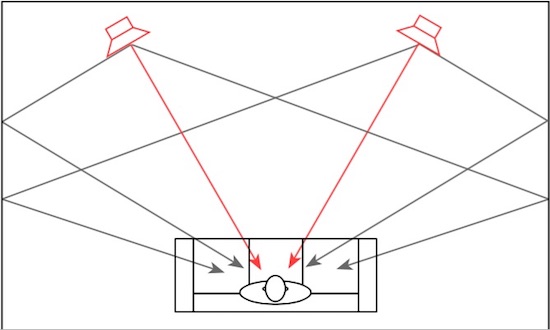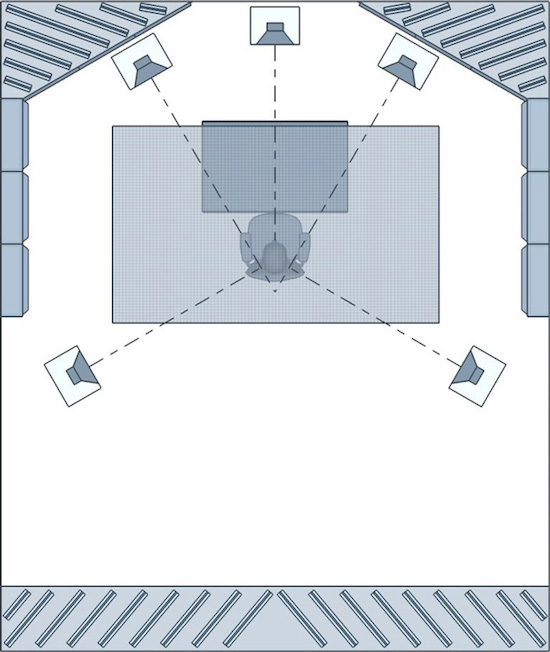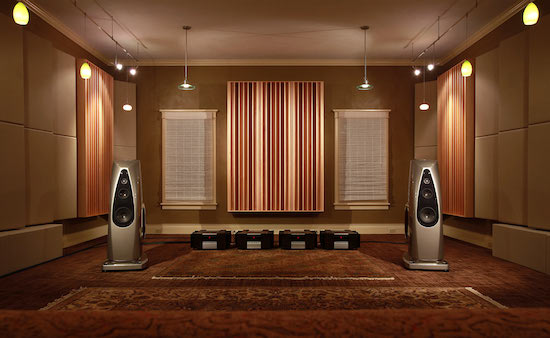“The test has begun. You survey the listening room from a grey leather armchair with a low back which is meant to preserve the integrity of the stereo panorama no matter how much you slouch. You admire the clarity of the bass drum.”
So begins the spoken narrative ofMeasuring Device With Organs by Alexander Provan, the first of a new series of LPs published by Triple Canopy. Housed in twelve-inch square cardboard, spun at thirty-three and a third revolutions per minute, a disc of black vinyl circumnavigated by grooves containing audio information to be read by a smooth-tipped stylus; Measuring Device With Organs is, nonetheless, no ordinary long-playing record.
Equal parts plunderphonic audio collage, sound studies essay, short story, memoir, and musical composition, Measuring Device With Organs is perhaps first and foremost an entreaty to its audience: to relate in a particular series of ways to the audio document you are listening to, and by extension, to call into question – and perhaps hold in suspension – the normal relations entered into by a listener and a given audio document. Relations between physical organs, heartfelt emotions, mathematical models and media apparatuses, between present and past.
“I think it asks the listener to perform in a certain way,” Provan tells me. “And so I think you’re always suspended between the performance of listening that is described in the record and just listening to the record in the way that you would typically listen to a record, which hopefully creates a tension between an attentive listening where you are actually trying to focus on the objective qualities of the sound and a… less paranoid kind of reading where you are relaxed and you are absorbing the work as you would a composition.”
Welcome to the world of the listening test, where expert listeners – so-called ‘golden ears’ – sit in carefully designed environments, offering their own considered responses to a series of audio stimuli as a stand-in, or unelected representative, for the potential responses of millions of other absent listeners around the world. With their roots in the military-industrial complex and psychoacoustic experiments of the early twentieth century, these highly sculpted and specialised environments are the birthplace to the codecs, standardised specifications, and physical or virtual formats that comprise the infrastructure of our everyday acoustic environment.

From the mediate auscultation of French physician René Laennec, inventor of the stethoscope, to the laboratories of the Fraunhofer Institute in Germany, hearing has been increasingly subjected to a kind of expertise, a careful precision engineering. This is the story told, in part, by Measuring Device With Organs. But it is also the story of a man, in a room, listening – and remembering.
So naturally, I was keen to ask Provan, as we spoke over a crackly Skype connection, prone to distortions and the occasional cut-out, just how golden are his ears?
“You know,” he admits with a kind of ironic ruefullness, “they’re not that golden. Fortunately I don’t have that kind of neurosis that is likely to bankrupt you! I’d love to get a ten thousand dollar hi-fi system but my price ceiling is really low in comparison. So I guess it’s something I appreciate on a pretty amateurish level.”
“But I do think,” he continues, “there is something remarkable about the kind of attentive listening experience that can be facilitated by those kind of systems – or at least, by –,” and here he pauses slightly, a slight sniff of a laugh, “ – by one’s awareness that you should be having such an experience because you’re listening on such a system.”

An editor, since 2007 at the art magazines Triple Canopy and Bidoun, over the last few years Provan’s activities have increasingly crossed the page to engage directly in art and exhibition-making, including contributions – either alone or as part of the Triple Canopy collective – to shows at the Museum of Contemporary Art, Denver, The Museum of Modern Art, New York, Kunsthall, Oslo, and the Bienal de Cuenca in Ecuador. Starting life two years ago as a performance at the New Museum in New York, Measuring Device With Organs takes its original inspiration from a book by Canadian scholar Jonathan Sterne called MP3: The Meaning of a Format.
“Sterne talks a lot about the relationship between political representation and the kind of representation that occurs in this listening test environment where one expert ostensibly stands in for everyone and not just for everyone who is deemed to be more or less like him,” Provan explains. “I was writing a review of that book when it first came out and I started writing something, as a tangent, in the second person – which made no sense in the review, at least to an editor who doesn’t typically want reviewers to be writing in the second person. But I ended up clipping that out and using it as the basis for the writing process [for Measuring Device With Organs].”
Credited as the founder of the new discipline of ‘sound studies’, a kind of historical ethnography of the ear, Sterne was already familiar to Provan for his previous book, The Audible Past. But it was deconstruction of “audiophile culture” and its “fixation on realism” that particularly appealed to him and piqued the interest that would result in the present work. “Especially in the rhetoric of contemporary advertising,” he says, “there is this fixation on realism and the qualities of sound that indicate that you are getting closer to the source, or to some mythical original, rather than a mediated experience – which is what a recording is.”
Few commercial recordings these days ask ther listeners to consider what a recording is, but Measuring Device With Organs seems to do just that. As such, the format, the physical sound carrier through which you are listening itself inevitably becomes part of the focus of your attention: the series of relationships between needle and groove, turntable and hi-fi system, speaker and room. “It’s channeled through a whole production mechanism – and it’s an outmoded one. It’s a medium that we now appreciate because it sounds old, or it evokes the way people used to listen to music.”
“So, to me, that seems temporally discombobulating a bit – or at least productively anachronistic. But it’s a kind of anachronism that exists in every expereince of listening to an LP these days, right? And what does it mean to have a memory of sitting around listening to an LP over and over again in 2018?”
Measuring Device With Organs by Alexander Provan is available from Triple Canopy


